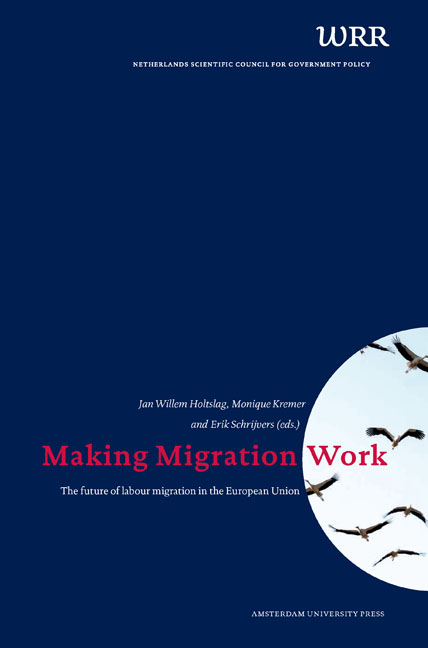Book contents
- Frontmatter
- Contents
- Introduction
- Acknowledgements
- 1 How to Make Migration Work
- 2 The Global and European Neighbourhood Migration Systems: Trends, Policy Choices, Governance Challenges and a Look Ahead
- 3 Satisfying Labour Needs in an Ageing Society
- 4 Migrant Workers: Inevitability or Policy Choice?
- 5 Intra-EU Labour Mobility after Eastern Enlargement and During the Crisis: Main Trends and Controversies
- 6 Labour Migration From Central and Eastern Europe and the Implications for Integration Policy
- About the Authors
6 - Labour Migration From Central and Eastern Europe and the Implications for Integration Policy
Published online by Cambridge University Press: 23 June 2021
- Frontmatter
- Contents
- Introduction
- Acknowledgements
- 1 How to Make Migration Work
- 2 The Global and European Neighbourhood Migration Systems: Trends, Policy Choices, Governance Challenges and a Look Ahead
- 3 Satisfying Labour Needs in an Ageing Society
- 4 Migrant Workers: Inevitability or Policy Choice?
- 5 Intra-EU Labour Mobility after Eastern Enlargement and During the Crisis: Main Trends and Controversies
- 6 Labour Migration From Central and Eastern Europe and the Implications for Integration Policy
- About the Authors
Summary
INTRODUCTION
The European Union's enlargement in 2004 and 2007 was one of the most important political innovations of the early twenty-first century. The accession of ten new Member States led to a considerable increase in labour migration. Millions of Central and Eastern Europeans went to Western Europe for work. The scale of these migration flows was unanticipated (Black et al. 2010). That was true of the migration flows to the Netherlands too. According to estimates, between 260,000 and 305,000 Central and Eastern Europeans were living in the Netherlands in 2008 (Van der Heijden et al. 2011). These estimates include Central and Eastern European labour migrants who were not registered in the Municipal Personal Records Database. Many labour migrants in fact do not register, even though they live and work in the Netherlands. These undocumented people can make it very difficult for local councils because they have no idea how many Central and Eastern Europeans reside within their boundaries, or who they are.
I wish to emphasise from the outset that labour migration today takes place in an entirely different institutional context than the guest worker migration of the 1960s and 1970s. Unlike today's EU labour migrants, Moroccan and Turkish guest workers did not have the option of ‘commuting’ after the borders closed in 1973 (Engbersen 2012a). As a result, large numbers of Turks and Moroccans settled permanently in Western Europe, including the Netherlands (Sassen 1999). The Dutch welfare state has also undergone fundamental changes in recent years. Access to social welfare schemes has become more selective, and national assistance benefits are now a local matter. Only people who have put down local roots have access to national assistance or other local social safety nets (‘residence criterion’ or ‘ties with the region’).
The public housing sector was privatised in the early 1990s, and labour migrants are now considered responsible for their own housing. Employers have nothing more than a ‘moral obligation’ in that respect (Tweede Kamer 2010-2011, 29 407, no. 116). Another institutional change is that labour migration policy is more selective and more differentiated than it used to be.
- Type
- Chapter
- Information
- Making Migration WorkThe Future of Labour Migration in the European Union, pp. 105 - 122Publisher: Amsterdam University PressPrint publication year: 2013
- 2
- Cited by



